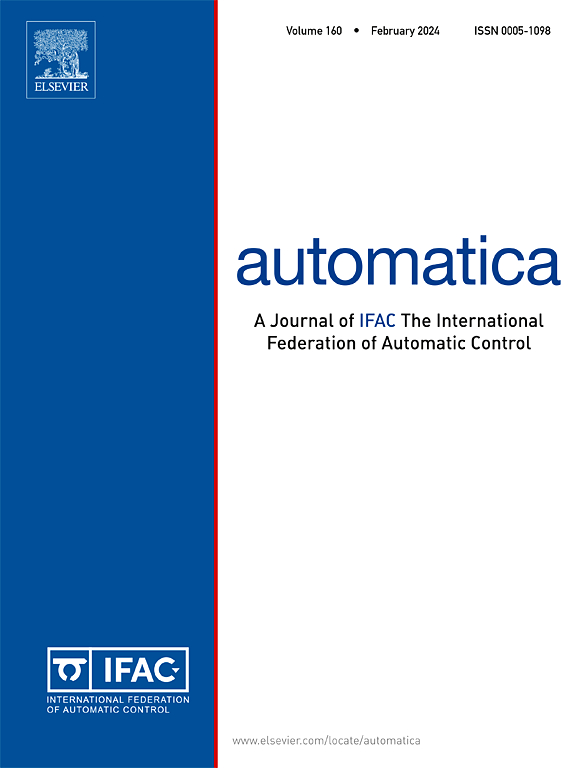Soft-minimum and soft-maximum barrier functions for safety with actuation constraints
IF 4.8
2区 计算机科学
Q1 AUTOMATION & CONTROL SYSTEMS
引用次数: 0
Abstract
This paper presents two new control approaches for guaranteed safety (remaining in a safe set) subject to actuator constraints (the control is in a convex polytope). The control signals are computed using real-time optimization, including linear and quadratic programs subject to affine constraints, which are shown to be feasible. The first control method relies on a soft-minimum barrier function that is constructed using a finite-time-horizon prediction of the system trajectories under a known backup control. The main result shows that the control is continuous and satisfies the actuator constraints, and a subset of the safe set is forward invariant under the control. Next, we extend this method to allow from multiple backup controls. This second approach relies on a combined soft-maximum/soft-minimum barrier function, and it has properties similar to the first. We demonstrate these controls on numerical simulations of an inverted pendulum and a nonholonomic ground robot.
具有执行约束的安全软最小和软最大障碍函数
本文提出了两种新的控制方法,用于保证安全(保持在安全集合中),但受制于执行器约束(控制在凸多边形中)。控制信号是通过实时优化计算得出的,包括受仿射约束的线性和二次方程程序,并证明这些程序是可行的。第一种控制方法依赖于软最小障碍函数,该函数是利用已知备份控制下的系统轨迹的有限时域预测构建的。主要结果表明,该控制是连续的,并且满足执行器约束条件,安全集的一个子集在该控制下是向前不变的。接下来,我们扩展了这一方法,允许使用多个备份控制。第二种方法依赖于软最大/软最小组合障碍函数,其特性与第一种方法类似。我们在倒立摆和非全局性地面机器人的数值模拟中演示了这些控制方法。
本文章由计算机程序翻译,如有差异,请以英文原文为准。
求助全文
约1分钟内获得全文
求助全文
来源期刊

Automatica
工程技术-工程:电子与电气
CiteScore
10.70
自引率
7.80%
发文量
617
审稿时长
5 months
期刊介绍:
Automatica is a leading archival publication in the field of systems and control. The field encompasses today a broad set of areas and topics, and is thriving not only within itself but also in terms of its impact on other fields, such as communications, computers, biology, energy and economics. Since its inception in 1963, Automatica has kept abreast with the evolution of the field over the years, and has emerged as a leading publication driving the trends in the field.
After being founded in 1963, Automatica became a journal of the International Federation of Automatic Control (IFAC) in 1969. It features a characteristic blend of theoretical and applied papers of archival, lasting value, reporting cutting edge research results by authors across the globe. It features articles in distinct categories, including regular, brief and survey papers, technical communiqués, correspondence items, as well as reviews on published books of interest to the readership. It occasionally publishes special issues on emerging new topics or established mature topics of interest to a broad audience.
Automatica solicits original high-quality contributions in all the categories listed above, and in all areas of systems and control interpreted in a broad sense and evolving constantly. They may be submitted directly to a subject editor or to the Editor-in-Chief if not sure about the subject area. Editorial procedures in place assure careful, fair, and prompt handling of all submitted articles. Accepted papers appear in the journal in the shortest time feasible given production time constraints.
 求助内容:
求助内容: 应助结果提醒方式:
应助结果提醒方式:


